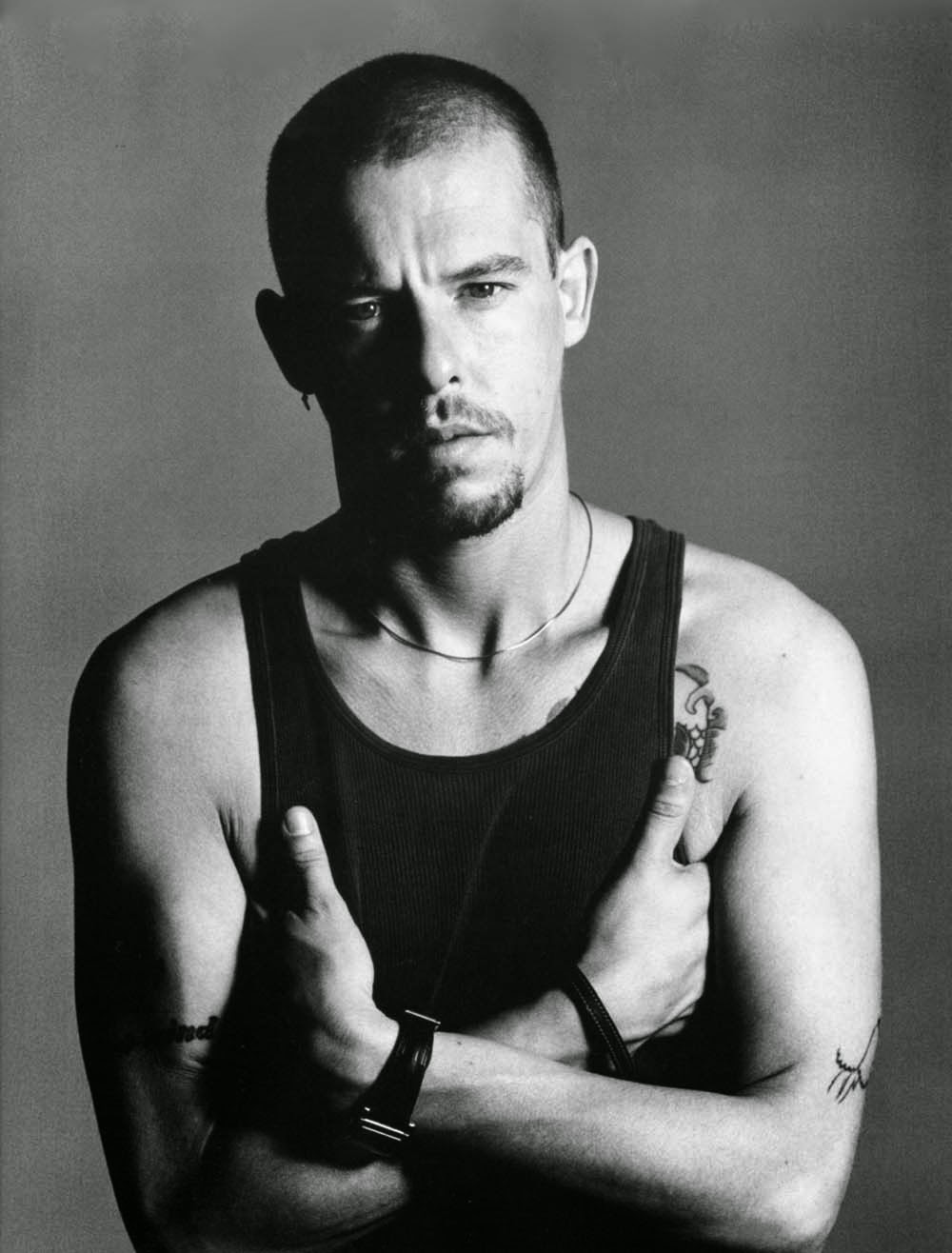Alexander McQueen: Blood Beneath the Skin
Things kicked off about a week ago with the V&A Museum’s
recreation of Savage Beauty* an
exhibition on McQueen originally displayed at New York’s Metropolitan Museum of
Art back in 2011. Its great success
prompted a (rather late) sequel in London, wholly pervasive in its
advertisement on the doors of our cabs, and the walls of our tube
stations. Literature on McQueen has also
expanded substantially over the last few years, though in this case it proves
more difficult to separate the wheat from the chaff.
One of the most compelling reasons to read a book such as
this is the fact that it intertwines the designer’s work life and personal
life. Wilson uses this to great effect,
managing to cover all of the major events in McQueen’s personal and work life,
while also bringing more obscure anecdotes to the table, stemming from personal
conversations and interviews the author conducted with McQueen’s family and
friends. This alone inherently elevates
this book above the competition, but there are of course, yet more positive
aspects. My only personal lamentation is
that it is written after the death of Isabella Blow, meaning she was unable to
give comment. Similarly, it does not
make use of those close to her, such as milliner Philip Treacy, restricting
itself to Detmar, her husband.
Along with his experiences of a child, Wilson documents
McQueen’s extensive drug use, and reveals shockingly that he knew he was HIV
positive, yet elected to continue having unprotected sex, despite making
charitable donations to various AIDS organisations. Never shying away from controversy, the book
also claims that shortly before his suicide, that he was going to
design his last collection then commit suicide during the show by placing
himself inside a Perspex or glass box and shooting himself in front of the
audience. This debauched lens through
which McQueen’s life and career are viewed either detract or add to the value
of the book, depending entirely on what the reader seeks to gain. Those who know little about McQueen as a
designer are not really the audience for this book, it is for those who wish to
gain an intimate insight into McQueen’s life, and the trials and tribulations
it brought about. It serves as a beneficial companion to Savage Beauty, written to induce from us a heavy suspiration upon
the realization that the fashion industry destroyed one of its own brightest
talents.
What, then, can we gain from this book? For one, we may take away the understanding
that fashion is not frivolous, rather that it is largely engrossing, capable of
arousing strong emotions when executed by such an iconic designer. McQueen was one of the few creatives who was
not fazed by the money, and created clothing that made women feel beautiful and
strong, uxoriously thanking women, whom he claimed to be the true heroes in his
life. The British do love an underdog, especially one who went from having
nothing to owning a £20m brand, and perhaps that is what this book’s appeal
lies in.
Blood Beneath
the Skin depicts McQueen as he was, a genius who was indeed
reprehensible at times, but a tortured soul, who deserves our sympathy and
gratitude for all he gave over the years, and for all he lost. The sole regret one could have upon reading
this is that, given this book was written with the approval of the McQueen
family, we may well never know the true extent of the horrors that bedeviled
Lee McQueen’s personal life.
Nevertheless, this book is an unflinching but wonderfully-readable
account, backed up by fantastic research. Indeed, as McQueen’s sister claimed, this is
the biography Lee would have wanted.
Christian Robinson
*Weirdly, 600 copies of Blood
Beneath the Skin were ordered by the V&A to accompany Savage Beauty, but two weeks before the
exhibition opened, the publishers were told that the museum had been asked not
to stock any biographies. The V&A
have made clear that they do not wish to make known the less-glamorous aspects
of McQueen’s life, much to the consternation of Andrew Wilson.




Comments
Post a Comment